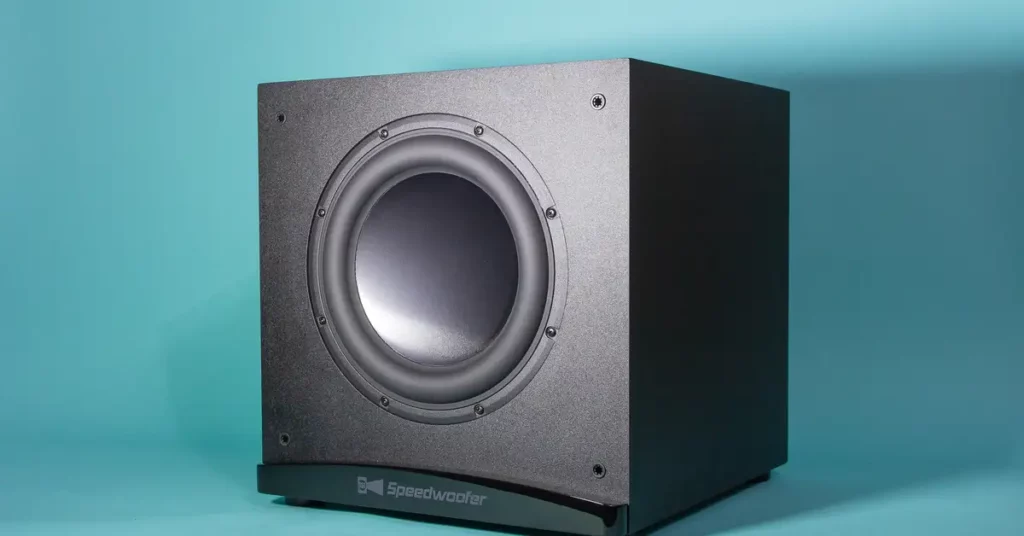Subwoofers are essential in a home theatre or music system, providing low-frequency bass that adds depth and impact to audio.
Unfortunately, many people face problems with their subwoofers cutting in and out, creating a frustrating and inconsistent experience.
Loose connections, damaged cables, power source problems, amplifier or speaker problems, interference from other electronic devices, or suboptimal settings could cause cutting-in and out issues in subwoofers.
Identifying the root cause of the issue is essential to finding a solution that will restore your subwoofer’s performance to its optimal levels.
By troubleshooting the potential causes and resolving any underlying issues, you can improve the performance of your subwoofer and ensure that you enjoy high-quality audio that adds depth and impact to your home theatre or music system.
Important Reasons Behind Subwoofer Audio Cutouts
Grounding Problems
Subwoofers cutting out can signal grounding problems, damaging components like speakers and amplifiers.
Checking continuity with a multimeter is not always effective, but other ways exist to isolate and fix grounding issues.
To troubleshoot, start from the amplifier and slowly turn the knob while listening to the sound switch.
If the humming sound changes, the issue is with the amplifier. If not, keep eliminating devices till you find the faulty one. Once you find the defective device, check and fix it.
Amp In The Protect Mode
An amplifier going into protect mode can be due to overheating issues, incorrect gain settings, blown-out fuses or drivers, loose connections, or improper installation.
When this happens, the amplifier blocks power from all speakers (including the sub) and displays “Protect Mode.”
The best way to fix this error is by seeking professional assistance. Even if you manually turn off the protected mode, it will turn on again.
Amp Clipping And Overheating
Amplifier overheating can occur for several reasons, including terrible ground, blown speakers, impedance mismatch, and clipping.
Clipping happens when an amplifier tries to push more signal than its power capacity, leading to overheating.
To prevent this, lower the volume or gain setting, ensure the amplifier’s RMS output matches the sub’s RMS rating, and ensure the sub’s impedance matches the amplifier.
Low Voltage
While a home stereo system receives a stable power supply, car stereo systems are more susceptible to voltage drops.
This can lead to issues such as subwoofers cutting off, particularly if the car has multiple speakers and connections.
To fix this issue, use a multimeter to check the voltage ratings of the amplifier. If the rating drops to 12 volts, you must change the amp to fix the error.
Wiring Thickness Problem
Subwoofers require a lot of power, and the amplifier can struggle if the wires add too much resistance.
This can cause the fuse or blower to shift the amplifier to Protect Mode. To avoid this issue, use the proper wire thickness, as indicated by the American Wire Gauge (AWG) number. Lower AWG wires have less resistance to current flow, making them ideal for subwoofers.
Overcrowding And Interference
You may experience interference and overcrowding issues if you have a wireless subwoofer. Devices such as smartphones, tablets, laptops, gaming consoles, and computers can interfere with the Wi-Fi and Bluetooth signals of the sub, leading to signal overlap and a lack of sound.
To fix this issue, turn off all Bluetooth and Wi-Fi devices you are not using, upgrade your mesh Wi-Fi network to reduce blocking, and connect the sub to a 5.0 GHz band router.
Blown Subwoofer
It may be blown if you have been trying to troubleshoot your subwoofer but nothing seems to work. A completely blown subwoofer will not produce any sound at all.
If you hear a dry sound with an uncontrolled bass response and lack of punches, it could be a sign of a partially damaged subwoofer.
The first step is to use a multimeter to check the subwoofer. Change the reading settings from Volts to Ohms, then connect the multimeter to the back terminal of the subwoofer and check the reading.
If the reading comes out below 1 Ohm, contacting customer support or a third-party servicer to fix the subwoofer is best.
How To Fix A Cutting-Out Subwoofer?
To guarantee optimal audio performance from your subwoofer, it is essential to check the cables or speaker wires for proper connection between the subwoofer and the main unit. Loose or damaged connections may result in audio cutouts or reduced sound quality.
Connecting a subwoofer to an extension cord or power strip increases the risk of electrical shorts or surges, which could damage the speaker and cause audio interruptions.
It is essential to ensure your AC outlet is stable and dependable, as power surges or fluctuations can cause audio cutouts.
If your subwoofer has audio issues, it could be worth investigating your electrical system to see if that’s the cause. Try a different power outlet to see if that helps solve the problem.
However, if that doesn’t solve it, consult an electrician for further assessment of wiring and grounding in your electrical system.
How To Diagnose A Subwoofer Problem?
To diagnose possible issues with your subwoofer, you can perform a simple test by tapping lightly on the cable’s centre conductor.
Repeat this procedure at the other end of the cable. Once the subwoofer is powered on and properly adjusted, you should hear a thumping sound coming from it in response to tapping. This indicates that the subwoofer receives an audio signal and can produce sound.
However, if you do not hear a thumping sound from the subwoofer in response to tapping, this suggests there may be an issue with its service.
A malfunctioning amplifier, damaged wiring, or driver issue could cause this.
If your subwoofer is malfunctioning, it’s wise to seek assistance from an audio technician or the manufacturer for further diagnosis and solutions.
These professionals possess the technical knowledge, required to diagnose and resolve the causes of your issue as well as provide helpful tips on proper maintenance to avoid future issues.
Is Repairing Of Subwoofers Possible?
If their cone has suffered partial damage, then subwoofers can be repaired.
However, replacing the voice coil may prove more challenging and cost-effective in certain circumstances; thus, purchasing a new subwoofer might be preferable.
If your subwoofer’s cone has partially blown, there are some repair options to consider. Using adhesive to patch up the cone could potentially restore its functionality; however, make sure the glue used is compatible with the material of the cone to avoid further harm.
This can help prevent damage from spreading and enhance the cone’s structural integrity. However, if the subwoofer’s voice coil is damaged, the repair could prove more complicated or necessitate replacing the entire subwoofer.
When a subwoofer fails, an individual may be tempted to purchase a brand-new subwoofer as a replacement. However, this may not always be the most cost-effective option.
Replacing just the voice coil of an existing subwoofer may be preferable if replacing the entire unit is more expensive than purchasing a new subwoofer.





